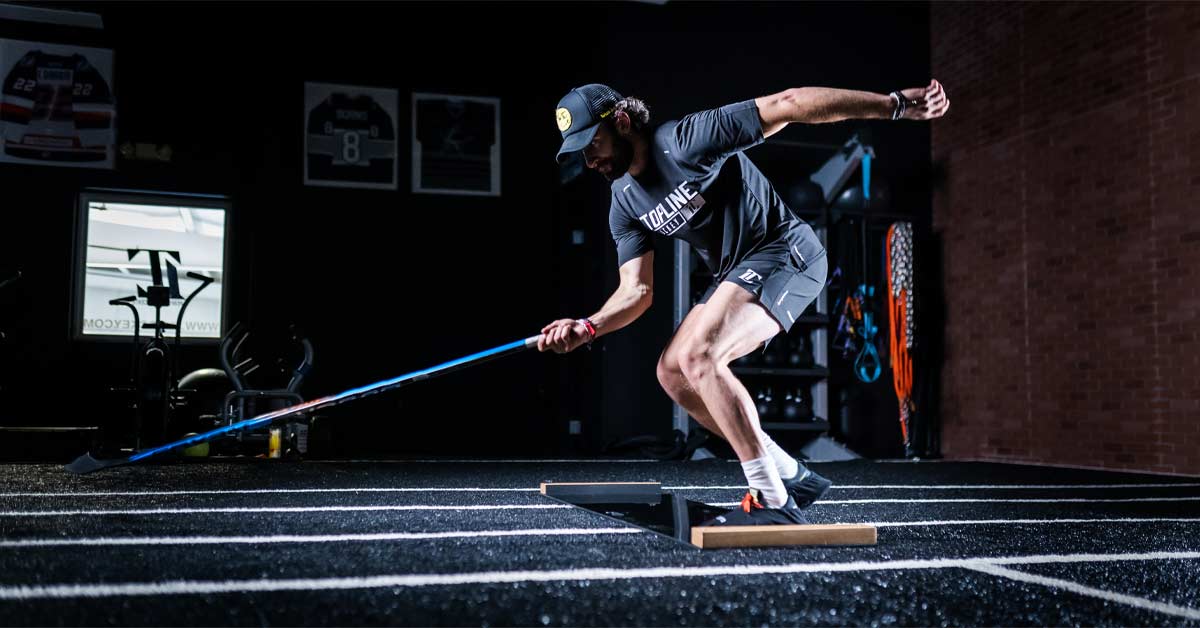Following the Jane Fonda era of at-home workouts (shout out to “Physical” on Apple TV), the ’90s introduced a new wave of fitness trends in the United States: Billy Blanks’ “Tae Bo,” Tony Little’s “Gazelle,” and Susan Sommers’ “Thighmaster”—just to name a few.
It wasn’t hard to notice fitness infomercials flooding the airwaves, all promising a slimmer figure to eager customers who yearned to remove the “work” from working out.
But amidst all the noise, one particular trend was actually offering sound advice. This upstart trend had a unique selling point: encouraging people to work out in a completely new direction—specifically, with exercises focused on the frontal plane (aka side-to-side movements), which was unlike any style of training currently marketed by traditional fitness brands.
Enter the slide board.
Now, if you were a comedy nerd like me, you might remember the 1995 Judd Apatow-penned cult comedy “Heavyweights,” which starred Ben Stiller and then up-and-coming actor Kenan Thompson. To this day, comedy cinephiles continue to echo the movie’s most famous tagline—“I’m feeling skinny, Tony!”—a response uttered by one of the blindly loyal disciples of Tony Perkis, the notorious, fat camp coach (played by Stiller) who was on a mission to slide pounds off his feeble camp counselors through painfully watchable slide board workouts.
But before slide boards got their big break on the big screen, the lateral movement was already underway two decades earlier—in a much cooler arena. (Trust me—the pun will make sense soon.)
From the Farmhouse to the Podium
The first slide boards actually date back to the 19th century, when Dutch speed skaters used wax-coated barn doors to practice their skating motions. But their impact in the U.S. wouldn’t emerge until centuries later, beginning in the 1970s with Eric Heiden—the former Olympic gold medalist speed skater who was the first to win gold medals in all five events (500m, 1,000m, 1,500m, 5,000m, and 10,000m).
Eric Heiden noticed a need for speed skaters to improve their performance on the ice through a dryland training tool that mimicked the lateral push movement relevant to the sport, says @JimmyTMartin. Share on XAfter retiring from the sport, Heiden studied medicine, later becoming an orthopedic surgeon. He noticed a need for speed skaters to improve their performance on the ice through a dryland training tool that mimicked the lateral push movement relevant to the sport. So, with two wood bumpers, a slick plastic surface, and hospital-like booties to put over your sneakers, Heiden created “The Heiden Board” (go figure!), pioneering the movement of slide board use in the USA.
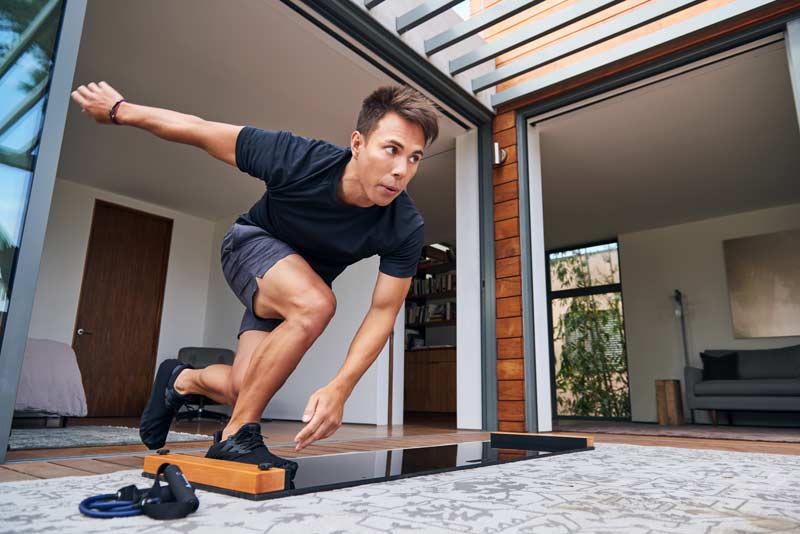
In the late ’80s, the success of the Heiden Board amongst the speed skating community soon inspired Dr. Louis Keppler—a former speed skater and fellow orthopedic surgeon—to follow in Heiden’s footsteps. While working as a team physician for the Cleveland Indians (now Guardians), Keppler began to notice an abundance of ACL and patellofemoral injuries in his athletic patients. This led Keppler to develop his own slide board training protocol called “The Keppler Method” (noticing a pattern here?). Keppler later patented his slide board, called “Euroglide” (never mind), and soon his method began to greatly impact the use case for slide boards in the rehabilitation space. Jeff Markland, a former NFL tight end for the Pittsburgh Steelers, used Keppler’s method to mend his career-ending knee injury.
The “Keppler Method” utilized a slide board for knee rehabilitation and provided patients with a specialized exercise program designed to help them recover from knee injuries or surgery. The program simulated skating motions and exercises that strengthen the muscles around the knee joint, improve range of motion, and promote healing.
Seeing firsthand the healing powers of Keppler’s method, Markland sought to find a way to bring this miracle rehab tool to the masses. This mission prompted him to partner with Reebok University’s Program Developer, Kathy Stevens, who was tasked with creating a successor program to their wildly popular “Step Reebok” series.
And in 1994, just a year before “Heavyweights” debuted, Slide Reebok introduced slide boards into the greater fitness community. These were the industry’s first roll-up board, paired with “slide aerobics” workouts that could be done both at home via VHS tape and in a group fitness setting at your local gym.
This wave of excitement for slide boards soon inspired a new cast of celebrity-backed workouts from the likes of Denise Austin, Kathy Ireland, and Cheryl Ladd, all leading slide aerobics exercises on the new lightweight, roll-up model of slide boards. But despite Markland and Stevens’ best efforts to inspire the next generation of lighter-weight slide boards and aerobics-inspired workouts, users outside of the step aerobics crowd weren’t getting on board (pun intended). Additionally, the roll-up design—though convenient to move and store—lacked the durability and stability needed to convince customers to get on board day in and day out.
Soon after, Reebok pulled its funding for the program, and the end of the ’90s saw the end of the once-thriving slide aerobics era. But, as the buzzy ’90s trend was slowly losing its steam, a Northwestern University grad named Barry Slotnick was slowly reengineering a custom-made slide board that carried more weight (quite literally) and served the demographic that initially put slide boards on the map: athletes.
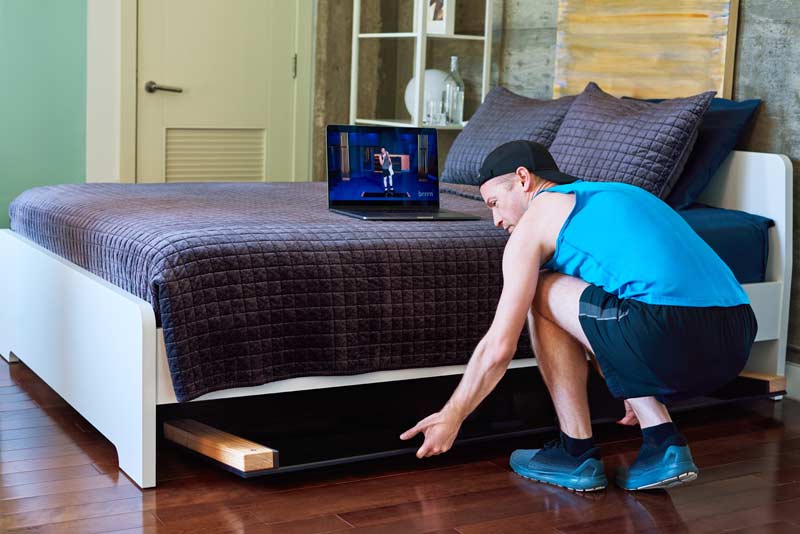
A native of Illinois, Slotnick built his first slide board in 1992 in his off-campus apartment as a cross-training tool for cyclists. His board soon caught the interest of the Northwestern tennis team, which was searching for a frontal-plane-dominant training tool to help players perform better while reducing the risk of knee injuries (meaning: side-to-side exercises). A year later, Slotnick received a call from the Chicago Bulls, requesting longer slide boards built for their taller athletes.
Slotnick’s board caught the interest of the Northwestern tennis team, which was searching for a frontal-plane-dominant training tool to help players perform better while reducing knee injury risk. Share on XThis opportunity prompted Slotnick to form his company, Varisport, and he began his journey as the American-made manufacturer of the UltraSlide Board—the fitness industry’s first eco-friendly, 8–10-foot slide board made for high school to Olympic athletes, as well as rehabilitation centers all across the country. But it wasn’t until 2004—just a decade later—that I would glide across (sorry—couldn’t help myself) Slotnick’s 10-foot UltraSlide board.
While training as a Division I college athlete on George Mason University’s wrestling team, I noticed this long white board on the floor of our strength and conditioning room.
“What’s this?” I asked.
“The most important piece of equipment in this room,” the trainer replied.
After only 10 minutes of continuous effort, I realized that this simply made product was not only one of the most versatile pieces of equipment I had ever used, but it actually packed a punch that I had never felt before as a high-caliber athlete. We did abdominal work, unilateral leg strength exercises, sliding push-ups, and sprinter slides—which instantly turned me into a sweaty and sore human.
Following the workout, I asked the trainer what he meant by this being the “most important piece of equipment in the room.” He proceeded to explain how most sports are multidirectional in nature. And given the historical pitfalls of most modern-day equipment—which primarily focus on sagittal plane exercises (aka forward and backward movements) on equipment such as treadmills, rowing machines, and bikes—it wasn’t surprising to him that athletes were experiencing a rise in muscular imbalances and injuries, specifically to their hips, groin, and knees, as a result of their bodies not being capable of moving in all directions.
These imbalances and injuries could have been avoided if there was a greater emphasis on adding frontal plane training to the equation—which is where the slide board comes in, says @JimmyTMartin. Share on XPersonally, I saw this firsthand with our school’s baseball, volleyball, tennis, and basketball players who had suffered a variety of hip and knee injuries while pivoting in action. And to my trainer’s point, these imbalances and injuries could have been avoided if there was a greater emphasis on adding frontal plane training to the equation—which is where the slide board comes in. Simply put: if athletes want to improve their odds of enjoying an injury-free career and train smarter for their sport, the slide board needs to be front and center with training.
And from that point forward, it was hard not to find a slide board under the feet of any athlete when walking through our training room doors.
Next Slide, Please
Fast forward to 12 years later, when I was creating the concept for Brrrn with Johnny Adamic to launch the world’s first and only cool temperature (50°F) fitness experience in New York City. We both knew that we needed a workout that would give people goosebumps but in a different way. Johnny and I saw not just a need to change the conversation about temperature when it came to exercise but also the conversation about the direction that we move when we exercise.
I spoke about my experience using a slide board as an athlete and with my personal training clients and the value it brought to the health of our bodies. In my opinion, the key selling point of the slide board was how it offered the right balance of being fun and challenging. It offered the user a way to experience a novel movement that would keep their interest in real time while also raising their heart rate, increasing muscular fatigue, and flooding their skin with sweat in such a short period.
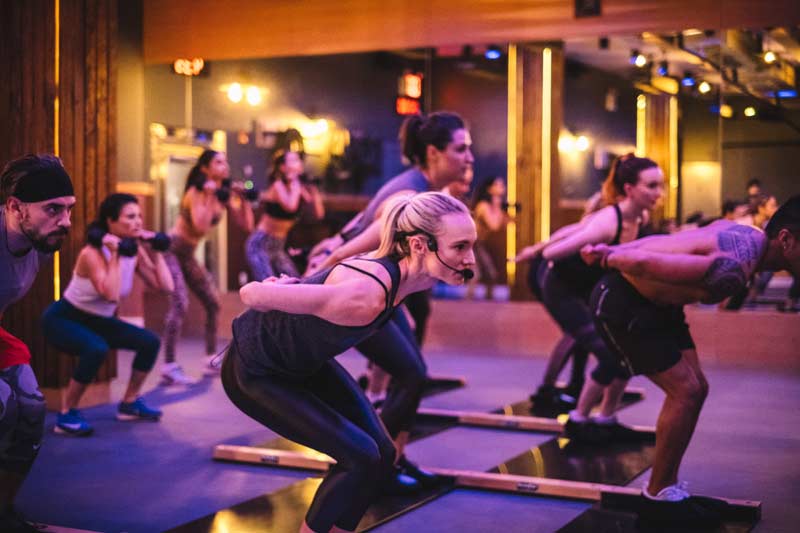
From that point on, we sought to redesign the slide board so that it could not only stand the test of time but also wow customers of all ages and abilities in the heart of fitness in New York City. So, when it came to finding the right person to help us design our Brrrn Board, only one name came to mind: Barry Slotnick of UltraSlide. Through this collaboration, Johnny and I were able to celebrate the past in real time by designing our signature product with an industry leader who would be threading his legacy through our brand.
From our launch in 2018 until March 2020, we had more than 23,000 customers through our studio doors and received press from The New York Times, “Live with Kelly and Ryan,” “Good Morning America,” and Bloomberg TV and Radio (and many, many more) for putting slide boards back on the map. And given the overwhelming interest from our customers, we were prompted to develop a Peloton-inspired at-home fitness workout built around the unique programming we had done thousands of times in our studio. After brainstorming ways to develop this fitness experience, Slotnick eventually became an investor in our company.
As fate would have it, however, the pandemic forced our company to make a “lateral move” and focus our entire efforts on creating a direct-to-consumer business inspiring users to get on board with lateral movement training. After a few months of redirecting our efforts, filming hundreds of classes with 20+ instructors, and building an e-commerce platform from scratch, we proudly launched our on-demand fitness platform built around our newly made 5–6-foot adjustable Brrrn Board.
To date, we’ve received investments from the likes of Apolo Ohno (8x Olympic medalist and the most decorated U.S. winter athlete of all time), been featured on “The Today Show,” and received awards from Men’s Health, Women’s Health, Good Housekeeping, and Rolling Stone Magazine. We also created the industry’s first and only accredited slide board training certification (recognized by NASM, ACE, and NCSF), which educates health and fitness professionals about properly applying slide-board-based exercises for one-on-one training as well as small and larger group fitness classes.
We’ve also become an instrumental training tool for youth and adult athletes in sports like hockey, baseball, wrestling, and pickleball. We’ve helped physical therapists help their patients rehab their knee and hip injuries post-surgery. We also increased attendance and retention for many boutique and big box studios by creating impactful programming through Brrrn’s unique slide board training methodology.
As an innovator, I believe you have a responsibility to improve the systems of your predecessors. And with the Brrrn Board, we’ve distilled the best qualities from the slide board these past few decades to create an inimitable fitness experience that can serve every body.
I would argue that you won’t find a more multipurpose, multidirectional training tool that offers a rehabilitative yet competitive experience than a slide board. Fun fact: our Brrrn branded “taps” slide (below) can allow your body to access all three planes of motion in just one movement.
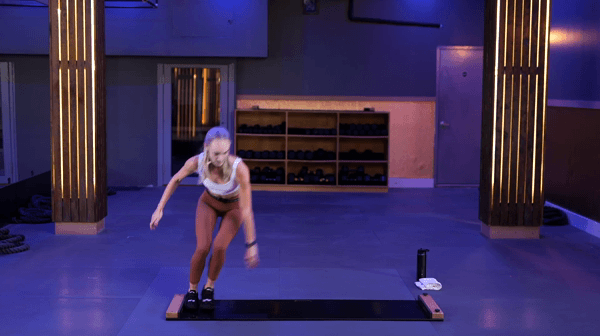
Most importantly, in a world where we are dodging in and out of the way of obstacles and threats to move closer to our desired goals, the slide board serves as the most underrated longevity tool in the fitness industry. By preparing you to move in any direction that life may take you, the slide board can allow you to do the things you love for longer by providing a well-rounded fitness experience that is enjoyable and accessible—both in price and in use.
The slide board can allow you to do the things you love for longer by providing a well-rounded fitness experience that is enjoyable and accessible—both in price and in use, says @JimmyTMartin. Share on XSo, whether your clients are youth athletes (hockey coaches), fitness enthusiasts (personal trainers or studio owners), or older adults (physical therapists), I can’t recommend the benefits of slide board training enough when it comes to improving balance, coordination, upper/lower body strength, core stability, and overall athletic performance.
Hopefully, you can look forward to lateral movement training as much as I do and are open to sliding this incredible training tool into your weekly workout routine!
Since you’re here…
…we have a small favor to ask. More people are reading SimpliFaster than ever, and each week we bring you compelling content from coaches, sport scientists, and physiotherapists who are devoted to building better athletes. Please take a moment to share the articles on social media, engage the authors with questions and comments below, and link to articles when appropriate if you have a blog or participate on forums of related topics. — SF

